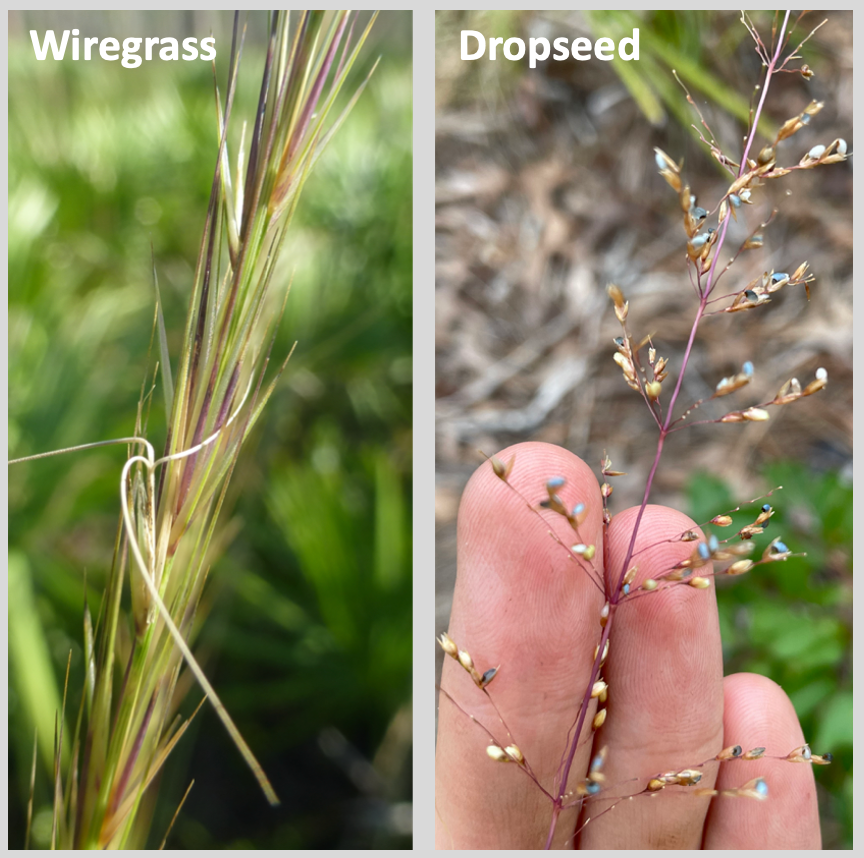Is that wiregrass or…?
When not flowering, you might look at the grasses in the right photo below and think there are two, individual wiregrass plants growing beside each other, but in fact, there are two species. Wiregrass (Aristida beyrichiana/stricta) has several look-alikes, namely pineywoods dropseed (Sporobolus junceus). These species are co-dominant in some dry, sandhills pine savannas (left photo). We have even found them growing so close that it is difficult to tell where one species ends and the next begins.
Unless the grasses are flowering, the only distinct difference between them are tufts of hair where the green leaf blade meets the sheath. In the right photo, we show the small white hairs on dropseed near the base of the plant. Some say dropseed’s leaves are softer in texture, but we have not been able to reliably use this character to distinguish them.
When they are flowering, it is easy to tell wiregrass and dropseed apart by their distinctive flowering culms. Aristida beyrichiana, also called Beyrich 3-awn, is known for its long, twisted awns. The seeds themselves are not awned, but rather the awns extend from the lemma, a structure that surrounds each seed.
We are currently examining populations of dropseed to determine whether it could be used in restoration as a potential alternative to or in addition to planting wiregrass. We have learned a few things thus far. First, dropseed has a longer flowering period than wiregrass, particularly when not burned. Although wiregrass is sensitive to the timing of fire, dropseed will flower even in the absence of fire. Second, dropseed disperses its seeds quickly after maturation as the name implies. It seems like one day it is flowering and the next the seeds are gone. We have had to place pollination bags on dropseed to ensure we are able to catch the dropping seeds for germination trials.



